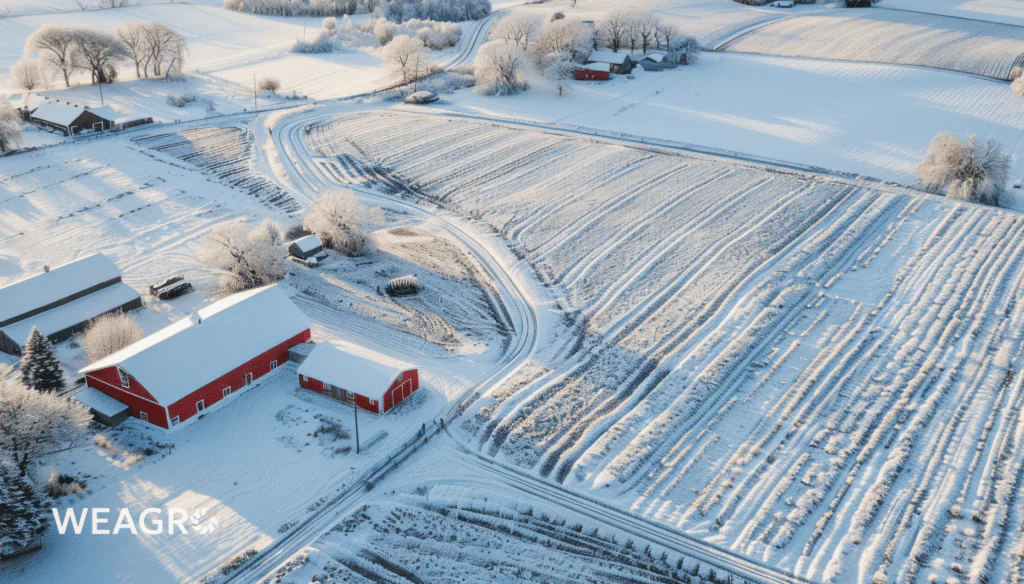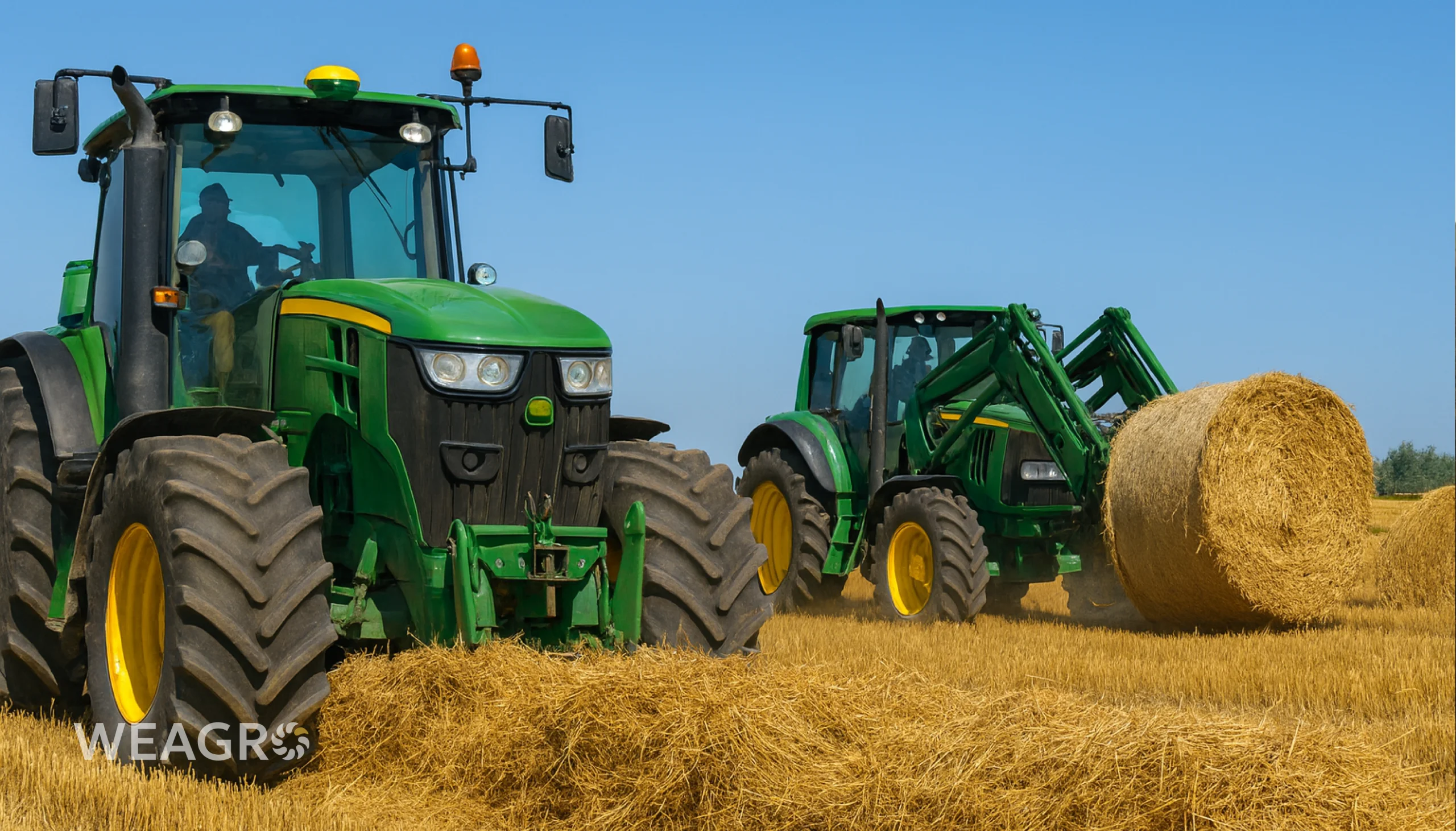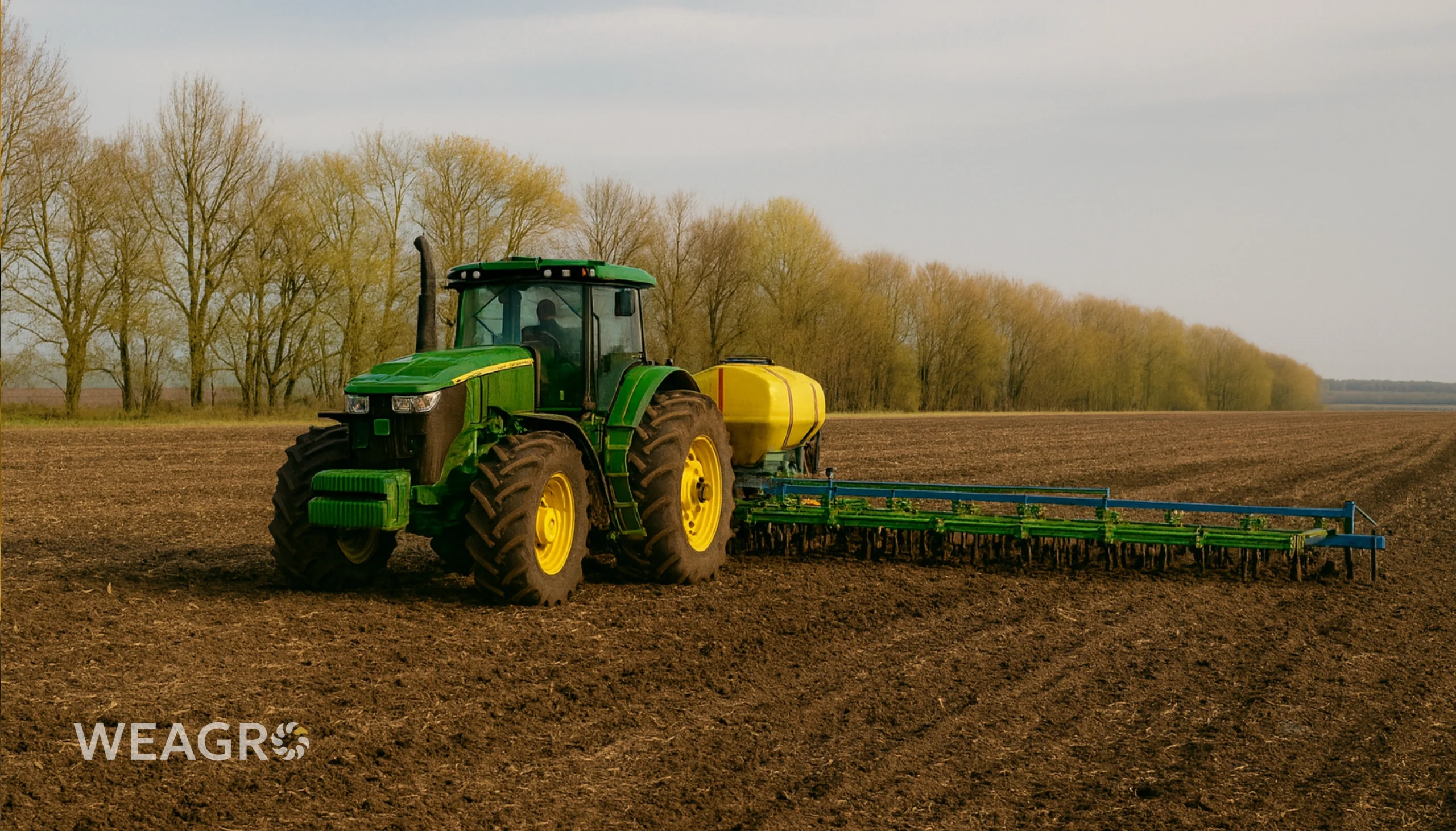When the agricultural season comes to an end, farm equipment that has been working intensively for many months needs not only rest but also careful maintenance before winter. Proper winter equipment storage is not just a recommendation but a strategy for preserving investments, minimizing repair costs, and ensuring readiness for the new season. In this article, we’ll explore how farmers can prepare their equipment for winter storage to ensure it’s fully operational and ready for work in spring.

Why Proper Equipment Storage Matters
In Ukrainian climate conditions, with temperature fluctuations, high humidity, and snowfall, equipment without proper preparation quickly deteriorates. Parts corrode, fluids freeze, lubricants lose their properties, and electronics can fail due to moisture. If equipment winterization isn’t addressed timely, spring startup can cost thousands of hryvnias in additional expenses, and sometimes require expensive equipment replacement.
Proper equipment storage is also a safety matter. Improperly preserved equipment becomes a source of hazards during subsequent operation: from fuel leaks to fires or breakdowns in the field. Moreover, for enterprises with large equipment fleets, winter preparation is also part of asset management culture.
Winter Equipment Preparation: Stages Not to Ignore
Everything starts with thorough cleaning. Equipment surfaces typically retain dust, dirt, fertilizer residues, or crop protection products after field work. Leaving these until spring can lead to rust, mold, and sometimes paint damage under moisture exposure. Therefore, the first rule is complete washing of the body, discs, hoses, and working parts.
Technical maintenance follows. It’s necessary to change or top up oil in all main units – transmission, hydraulic system, gearboxes. It’s particularly important to check coolant levels: it must be frost-resistant. Brake system, tires, electrical systems, bearings – everything must undergo inspection and diagnostics.
The fuel system should be emptied or a preservative added to diesel fuel to prevent sediment formation or waxing. Equally important is checking batteries – they should be removed and stored in a warm place, with periodic charging.
Where to Store Equipment: Under Roof or Outdoors?
The ideal solution is ventilated covered hangars. They protect from precipitation, direct sunlight (which also damages plastic, rubber, and paint) and maintain stable temperature. However, not all farms have such facilities.
For outdoor storage, additional measures are necessary: use breathable covers or tarps that allow air flow while protecting from moisture. Wooden boards should be placed under wheels to prevent rubber contact with wet ground or ice. It’s important to remove or secure all moving elements that could be damaged by wind or freezing.
Seeders, sprayers, tractors, cultivators, and other equipment with numerous moving parts are particularly vulnerable to weather factors. Even a seemingly simple detail like an uncovered pipe or hydraulic hose can result in breakdown and planting delays in spring.
Documentation and Record-Keeping: Often Underestimated Step
Physical preparation might seem paramount, but proper record-keeping is equally important: recording maintenance dates, noting who was responsible for equipment preservation, leaving information about current condition, mileage, and engine hours. This allows agricultural businesses to maintain transparent equipment history, plan workload for the next season, and minimize human error during subsequent startup.
For enterprises with large equipment fleets, using electronic accounting systems is beneficial. They simplify control, provide maintenance reminders, and assist in repair budgeting.
The Role of Prevention and Long-term Investments

Quality winter storage isn’t an expense but a long-term investment. It extends equipment service life, helps avoid unpredictable breakdowns, reduces repair costs, and ensures process stability in the new season. This is particularly relevant when new equipment costs are rising and imports are becoming increasingly expensive.
While some work can be done in-house, complex units or diagnostics are better entrusted to verified service centers. Some equipment or parts suppliers even offer service storage – with warranty and responsibility for technical condition.
When to Start Preparation: Don’t Wait for Frost
The optimal preparation period is immediately after active field work ends. Don’t postpone until the last week before frost: this leads to rushing, missed steps, shortage of service resources and technical personnel.
Early planning even allows for distributed workload: preparing one part of equipment while another is still in operation. This is particularly relevant for large farms with extensive logistics.
Conclusion
Successful winter storage isn’t just about equipment. It’s about management, responsibility, planning, and production culture. Spring always comes suddenly – and those who took care of equipment preservation in advance will gain a competitive advantage with the first warm days. Creating a maintenance plan, cooperating with services, keeping records, and prevention – all this works toward your results in the field.
Want to modernize your farm this winter without waiting for spring? Purchase equipment, parts, or service maintenance through WEAGRO agricultural installment plan – with no down payment and 30-minute decision.
Read also: Autumn Soil Preparation: Modern Approaches and Equipment









